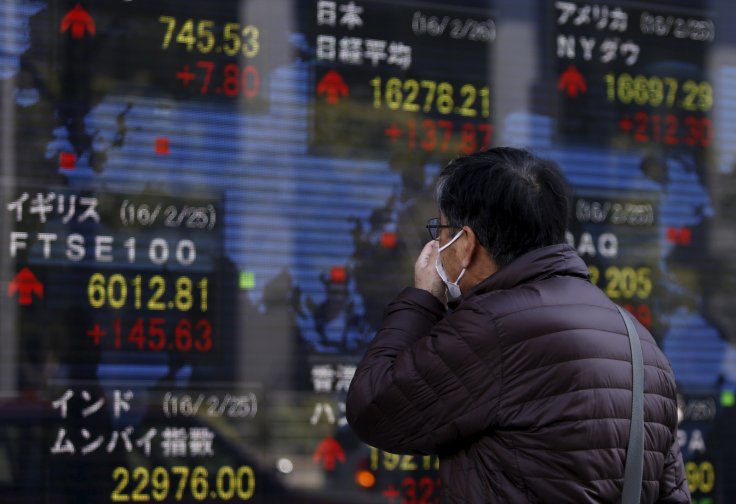
Asian stocks fell the most in a week on Wednesday as the United States and China's broadening dispute over trade and foreign policy showed little sign of coming to an end, weighing on global economic growth.
MSCI's broadest index of Asia-Pacific shares outside Japan .MIAPJ0000PUS was down 0.44%. Chinese shares .CSI300 fell 0.47% after briefly touching a five-week low. Australian shares were down 0.76%.
The U.S. Treasury yield curve steepened in Asia after U.S. Federal Reserve Chair Jerome Powell signaled further interest rate cuts and the resumption of bond purchases to address a recent spike in money markets rates.
Oil prices extended declines as U.S. visa restrictions on Chinese officials and the addition of more Chinese companies to a U.S. trade blacklist weighed on already slim hopes that Washington and Beijing could reach a truce at trade negotiations this week.
The United States and China are engaged in a year-long row that has slowly expanded beyond trade policy, suggesting even more damage to an already fragile global economy.
"Stock markets are still trying to price in the slowdown in global growth," said Kiyoshi Ishigane, chief fund manager at Mitsubishi UFJ Kokusai Asset Management Co in Tokyo.
"The dispute between the United States and China shows no sign of ending. We're losing confidence in the U.S. economy. There's more uncertainty about where the Fed is really headed."
U.S. stock futures ESc1 rose 0.22% in Asia, but sentiment was weak after the S&P 500 ended 1.56% lower on Tuesday in response to the U.S. visa restrictions.
Japan's Nikkei .N225 slid 0.7%, its biggest decline in a week. Hong Kong shares .HSI fell 0.52%, nearing a four-week low due to persistent worries about often violent protest against China's rule of the former British colony.
Shares fell in Apple Inc's (AAPL.O) suppliers in Greater China, such as Luxshare Precision (002475.SZ) and O-Film Tech (002456.SZ), after China's state media criticized the iPhone maker for an app use by Hong Kong protesters.
The U.S. State Department announced the visa restrictions just a day after the U.S. Commerce Department cited the mistreatment of Uighur Muslims in China in its decision to add 20 Chinese public security bureaus and eight companies to a trade blacklist.
The U.S. moves cast a pall over U.S.-China trade talks in Washington, where deputy negotiators met for a second day to prepare for the first minister-level meetings in more than two months on Thursday and Friday.
Washington is also moving ahead with discussions about restrictions on capital flows into China, Bloomberg reported.
Tit-for-tat tariffs imposed by the United States and China have roiled financial markets and slowed capital investment and trade flows.
U.S. President Donald Trump has said tariffs on Chinese imports will rise on Oct. 15 if no progress is made in the negotiations.
In currencies, sterling GBP=D3 traded near a one-month low of $1.2196 due to reports that Brexit talks between Britain and the European Union were close to breaking down.
The dollar index .DXY was little changed at 99.091. The euro EUR=EBS traded at $1.0965, and the yen JPY=EBS fell slightly to 107.18 per dollar.
The spread between two-year and 10-year Treasuries, the most common definition of the yield curve, widened to 11.6 basis points. [US2US10=TWEB]
The Fed's Powell, in a speech on Tuesday, flagged openness to further rate cuts and said the time to allow the Fed's asset holdings to begin to expand again "is now upon us."
The Fed had been shrinking its balance sheet as it unwound crisis-era bond buying programs. Recent volatility in U.S. money markets raised concern the Fed's balance sheet had become too small, leaving banks with inadequate reserves.
Powell said balance sheet expansion should not be read as an effort to stimulate the economy, but weak data on the U.S. manufacturing and services sector last week rattled investors' confidence that the U.S. economy remained robust.
U.S. crude CLc1 fell 0.42% to $52.41 per barrel. Brent crude LCOc1 fell 0.39% to $58.01 a barrel.
A larger-than-expected increase in U.S. crude inventories added to fears that the global oil market will continue to struggle with excess supply.








